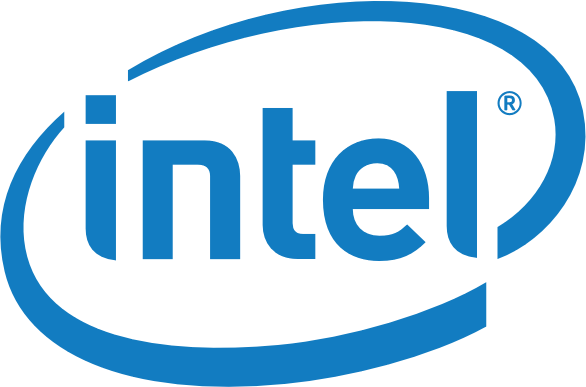And the whole "I could build a PC that is faster for 10th price"... nope you can't. Build me a pro PC with Xeons/Epyc and Quadro RTX/AMD Pro cards with 8 PCIE slots, 1400w PSU, Video acceleration like afterburner ( Red Rocket Or Avid AMX ) 12 DIMM slots with 6 Channel memory and Dual 10gb ethernet. It's impossible for the price and also impossible as No workstation MOBO can do ALL this at once.
Not at 1/10th the price , but it is possible for a Cascade Lake Xeon PC logic board to do this all at once at a lower price . When I got bored with Apple delaying the release of the MP7,1 , as a matter of fact I built the PC version of a Mac Pro to test some of the latest components .
Lian Li PC-A75 chassis 11 PCIe Slot = $160 .
EVGA Supernova T2 1600W PSU ( 220-T2-1600-X1 ) = $410 .
Supermicro X11SPA-TF Logic Board ( with 4 x 16 Lane Rev 3.0 PCIe ) = $600 .
Intel Xeon 6212U 2.4GHz 24 Core CPU = $2100 .
Supermicro SNK-P0070APS4 LGA 3647-0 4U CPU Heat Sink = $060 .
96 GB ( 6 x 16 GB ) PC4-23400 DDR4 2933MHz ECC = $385 .
4 x AMD Vega Frontier Editions 16 GB HBM ( I rebuilt these used cards ) = $1600 .
2 x 1TB NVMe M.2 PCIe SSD = $200 .
14x Blu-ray burner LG WH14NS40 = $055 .
Windows 10 Pro Workstation and Oracle Linux ( RHEL ) = $145 .
Total cost , current configuration = $5715 .
Everything is brand spanking new , except for the GPUs which I bought used and upgraded their cooling systems .
The logic board has four onboard NVMe M.2 SSD connectors , two of which are operational when the four compute GPUs are installed . I don't believe there is a capacity limitation of the drives .
Apple has limitations with the proprietary factory installed drive ( or interleaved pair of ) , because you need Apple's cooperation and an Apple branded product to change it . The installation of this drive is mandatory for the Mac Pro to boot .
The only drawback is the board I used can not support thunderbolt of any flavor .
As for a graphics acceleration with a card like Red Rocket , the chassis still supports three open single width PCIe cards ( eight slots are already occupied with GPU ) . All I'd need to do is run a shielded 3M PCIe extension cable and snake it under one of the GPUs to connect to one of three of the electrically unoccupied PCIe Slots .
I can install up to 3TB of 2933 MHz DDR4 ECC memory , but only up to 1TB with the current processor installed .
My machine also supports Intel DC Persistent memory ( look , folks ! Exciting new technology ! ) , something the Mac Pro cannot .
My machine currently has four Vega F.E.s ( basically WX9100s without the GPU ECC and fancy driver support ) . She can support up to four of any 300 W class cards , like the Quadro RTX 8000 . Macs cannot currently handle , of course , nVidia CUDA . Metal , yes . CUDA , no .
And nVidia compute runs quiet at load . Air cooled AMD compute in a PC can be quite un-quiet if you push it hard enough . The Mac Pro 7,1 is also quiet .
The logic board has an
immense amount ( 3 x 8 pin EPS , total of 840 W ) of booster power wired to it from the PSU to push all the installed high end component interfaces . GPUs have their eight 8 pin booster connectors fed straight from the same PSU , as well .
It has one onboard 10 GbE Port , but I can add more through PCIe add on cards as per above method .
There is a large amount of SATA storage capacity I have not even explored yet . At least eight 2.5" or 3.5" drives can be connected and mounted right now . And you don't need any fancy mounting module , either . Pegasus comes to the Mac Pro crowd and greedily takes our hard earned money in its hooves and quickly flies away to the nearest bank with a %@$! eating grin on its mouth .
The chassis has support for liquid cooling , if I want to go that route . I personally think its too risky .
The cherry on top of the sundae is I have an internal Blu-ray burner for burning archival Verbatim M-discs that can still be read after any Mac Pro 7,1 has long since turned to dust . Sorry , but it's true .
Oh , there are no layers of security nonsense that have blocked any of my upgrades , so far .
This machine is rock solid and went to system load for over 24 hours as a test , so its a good configuration .
I love my Mac Pro 7,1 and will keep her for years . I like macOS . It's more stable than Windows , easier to use than Linux and despite its over-complexity I still like the basic look and feel .
But for the price of a basic , entry level Mac Pro 7,1 ( $6000 ) , you could build your own
very powerful PC rendering machine . There are some trade offs and also some advantages , too . But PCs win the low cost award , again .
Shown in a mixed GPU configuration running power distribution and stability tests :




